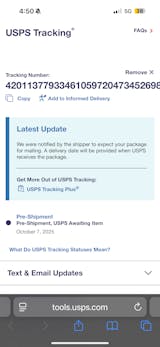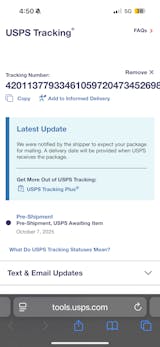How to Install AN PTFE Hose and Fittings
Whether you're a hobbyist upgrading your fuel lines or a pro working on EFI conversions, LS swaps, or custom AN plumbing, this guide will walk you through the installation of AN PTFE hose ends with precision and reliability. Our step-by-step tutorial ensures a leak-free result for fuel systems, transmission lines, and more.
Step 1: Measure Twice and Cut Once
Use string or lay the hose out to get an accurate measurement for your project. Leave a few extra inches for layout changes. Be sure to consider the correct bend radius.

Step 2: Cut Your AN PTFE Hose
Pro tip: wrap the cut area with tape before cutting PTFE hose to control braid fray (applies to nylon-braided and stainless versions).
Use AN Hose Cutting Shears for a clean, straight cut. Wrap the hose with masking tape before cutting to prevent fraying.

Step 3: Slide On the Nut
Slide the nut over the hose with threads facing forward. Use vice jaws to assist with the braiding. Place the nut in vice jaws and twist the hose into it as if threaded.

Step 4: Flare the Braid and Insert the Ferrule
Carefully flare the stainless braid and insert the ferrule over the PTFE liner, under the braid. Trim nylon as needed to ease fitting installation and protect threads.

Step 5: Insert the Fitting
Lubricate the barb and insert the fitting into the hose. Ensure it fully seats into the ferrule.
Step 6: Tighten the Assembly
Thread the nut onto the fitting by hand. Use an AN wrench and vice jaws to tighten until about a 1mm gap remains.

Step 7: Test for Leaks
Cap one end and pressure test the hose. Use soapy water or submerge it to check for leaks. Bubbles may appear from the swivel pin, which is not a leak.

Tips for Easier Assembly
- Always use light lubricant on fittings before insertion.
- Use tape generously to keep braid from flaring.
- Use proper tools like hose shears and vice jaws to avoid damaging the hose or fittings.
- Replace ferrules when reusing fittings.
- Inspect and pressure test every line after assembly.
Need Help or Want a Custom Build?
Have questions or want help with a complete fuel or transmission line system? We're here to help!
Looking for a tailored solution for your build? Use our Build Request Form to get a custom hose and fitting layout for your EFI, LS swap, carbureted build, or AN plumbing project.
PTFE Hose & PTFE Fittings — FAQ
Do I need special tools to assemble PTFE hose and PTFE fittings?
Yes—dedicated tools make the job cleaner and prevent damage: AN hose cutting shears, aluminum vice jaws, and AN wrenches. You’ll get better, repeatable results.
Do I need thread sealant on AN fittings?
37° AN flare connections seal on the metal flare—no thread sealant. For NPT tapered threads (on adapters only), use a fuel-safe thread sealant. ORB ports seal with an O-ring; no sealant on the threads.
How tight should I make PTFE hose ends?
Snug plus about 1/8–1/4 turn using AN wrenches while the fitting is held in aluminum vice jaws. Avoid over-torquing; it can distort the ferrule and the PTFE liner.
What micron fuel filter should I use for EFI?
Use a ≤10 μm filter on the pressure side for EFI systems. This protects injectors without restricting flow.
Is PTFE hose compatible with gasoline, E85, and diesel?
Yes, PTFE inner liners are compatible with gasoline, ethanol blends like E85, and diesel fuels. PTFE also has excellent vapor-barrier properties compared to traditional rubber.
Which hose size should I choose (AN-6, AN-8, AN-10)?
Size depends on power level, pump, and system layout. Review our sizing guide for practical recommendations.
Any tips for cutting braided PTFE hose cleanly?
Wrap the cut area with tape, use dedicated hose shears, and make a square cut. Deburr the liner if needed, then install the ferrule.
Can I reuse ferrules?
Best practice is to use a new ferrule when reassembling a fitting on PTFE hose to ensure a proper seal.
Finish Your PTFE Hose & PTFE Fittings Install


